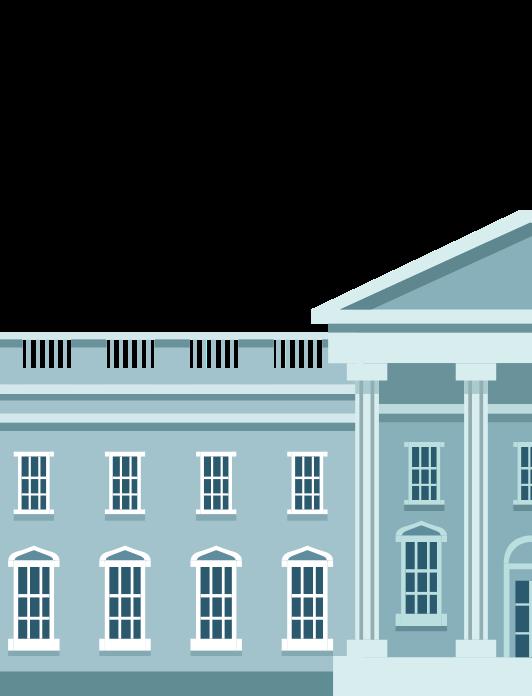
4 minute read
White House Historical Association
from A2Q Issue 3
by QatarAmerica
QAIC has recently partnered with the White House Historical Association (WHHA), and this month we highlight their mission to educate the public on the history and understanding of the Executive Mansion.
Responses provided by Stewart D. McLaurin, president of WHHA since 2014.
Advertisement
In 2021, WHHA celebrates its 60th anniversary. How has the organization adapted over the years, especially with regards to the ongoing COVID-19 pandemic? We remain committed to our mission of enhancing the understanding, appreciation, and accessibility of the Executive Mansion, but the pursuit of this mission has taken on different forms now, especially in the past year plus. We have introduced several virtual events, including White House History Live and History Happy Hour, two virtual programs that grant the opportunity to hear livestreamed discussions from experts and eyewitnesses of history. We have continued existing programming as fitting, including The 1600 Sessions podcast, a series in which I have the privilege of exploring the history, untold stories, and personal accounts of the White House, as well as our Quarterly Lecture Series, this year hosted by USA Today’s Washington Bureau Chief Susan Page, which have been livestreamed. We also continue to dedicate resources to our research, sharing articles,images from our Digital Library and other resources.
The White House may be perceived as an intimidating structure, both in its monumental style and its status as a center of the country’s decision-making. How do you make the White House accessible to all? Accessibility to the White House and education about it is our core mission, and one of former first lady Jacqueline Kennedy’s primary goals in its creation. She recognized the significance of the building as The People’s House and identified the need for people to feel connected to the Executive Mansion and its history. We offer a variety of educational tools and events through our David M. Rubenstein National Center for White House History, including our annual White House History Teachers’ Institute, which has continued virtually the past two years, our ongoing Slavery in the President’s Neighborhood initiative, our Digital Library, and countless other resources available on our website. We also offer the White House Experience mobile app which includes the White House 360 Virtual Tour - an immersive experience that takes you inside the halls of the White House and provides access to the public rooms on the Ground and State Floors. The tour also allows users to examine the rooms and objects even closer than would be possible during an in-person tour. We are working to provide an Arabic translation for the 360 Virtual Tour on the White House Experience app.
White House Historical Association
On the website there are online educational resources, virtual events, virtual tours of the White House – how much pre-existed before COVID scenario? What’s new?
The Association had to reimagine what our programming and events would look in light of the COVID scenario. Our strategy included adapting and creating new resources for an online format to allow people to continue learning about the history of our Executive Mansion from the safety of their homes. These resources have always been a part of our robust online presence, but we strategized the best organization of these tools. For example, we grouped the educational resources by grade, segmenting grades K-5 and 6-12 to better allow parents and students at home to navigate the site. Our goal was that these resources would assist parents and educators with distance learning as well as offering others another opportunity for access to our material. We have seen a great interest in our offerings of virtual programs in which experts and eyewitnesses of history speak on a variety of topics and facets of our nation’s history as related to the White House.

“Slavery in the President’s Neighborhood” initiative which traces the history of slavery at the White House. Tell us about this initiative.
You may remember, at the DNC convention in 2016, former first lady Michelle Obama said, “I wake up every morning in a house that was built by slaves.” It was this statement, and the outpouring of interest in the historical context of this statement, that served as the catalyst for Slavery in the President’s Neighborhood. Our historians began looking into the untold stories of enslaved people, butlers, stewards, builders, and other important voices often overlooked in the history of our Executive Mansion. Our historians have created an index of enslaved people, a three-dimensional tour of the Decatur House slave quarters, and a detailed, interactive timeline that covers major events related to enslaved populations at the WhiteHouse. The project is ongoing, and our team of historians has done a remarkable job connecting with descendants and combing through primary sources to cultivate this collection. We also recently unveiled the Wayfinder Exhibit in Lafayette Park, a trio ofhistorical markers that reside in the park with information about the involvement of enslaved labor in the construction of the White House, as well as commemoration and preservation of the White House and Lafayette Park. We’re thrilled at the impact of our Slavery in the President’s Neighborhood initiative and look forward to its continued influence on our understanding of the White House today.






